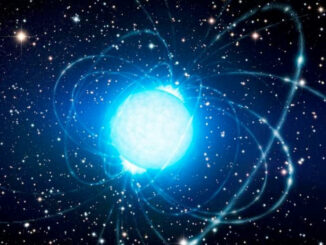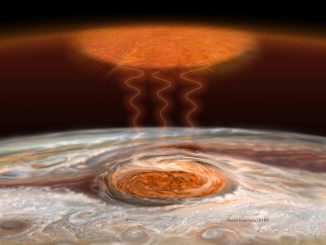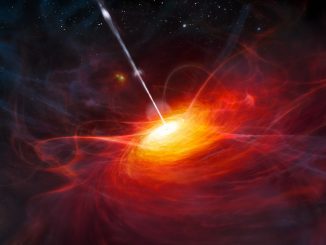
Royal Astronomical Society



Surprise methanol detection points to evolving story of Enceladus’s plumes
A serendipitous detection of the organic molecule methanol around an intriguing moon of Saturn suggests that material spewed from Enceladus undertakes a complex chemical journey once vented into space. This is the first time that a molecule from Enceladus has been detected with a ground-based telescope.


Astronomers identify a young heavyweight star in the Milky Way
Researchers have identified a young star, located almost 11,000 light-years away, which could help us understand how the most massive stars in the universe are formed. This star, already more than 30 times the mass of our Sun, is still in the process of gathering material from its parent molecular cloud, and may be even more massive when it finally reaches adulthood.

Jupiter’s Great Red Spot heats planet’s upper atmosphere
Astronomers from Boston University have discovered that Jupiter’s Great Red Spot (GRS) may provide the mysterious source of energy required to heat the planet’s upper atmosphere to the unusually high values observed. Heating in Jupiter’s atmosphere 500 miles above the GRS is thought to be caused by gravity waves and acoustic waves creating turbulent atmospheric flows.

AutoLens steps up for Euclid satellite’s 100,000 gravitational lens challenge
Due for launch in 2020, ESA’s Euclid satellite will set astronomers a huge challenge: to analyse 100,000 strong gravitational lenses. The gravitational deflection of light from distant astronomical sources by interposing massive galaxies can create multiple images of the source that are not just visually stunning, but are also valuable tools for probing our universe.

Chance microlensing events enable astronomers to probe distant quasars
Some galaxies pump out vast amounts of energy from a very small volume of space, typically not much bigger than our own solar system. The cores of so-called active galactic nuclei (AGNs) can be billions of light-years away, so are difficult to study in any detail. However, natural gravitational ‘microlenses’ can provide a way to probe these objects.

A 6,000-year-old telescope without a lens
Astronomers are exploring what might be described as the first astronomical observing tool, potentially used by prehistoric humans 6,000 years ago. They suggest that the long, narrow entrance passages to ancient stone tombs may have enhanced their view of the night sky, enabling them to detect the first appearance of seasonal stars during twilight.

ACT system tracks solar eruptions in 3-D
Scientists at Aberystwyth University have developed an automated method for three-dimensional tracking of massive eruptions from the Sun, called Coronal Mass Ejections (CMEs). The Automated CME Triangulation (ACT) system uses data from three space-based observatories that orbit the Sun at different locations, allowing scientists to view the Sun and CMEs from different angles.
